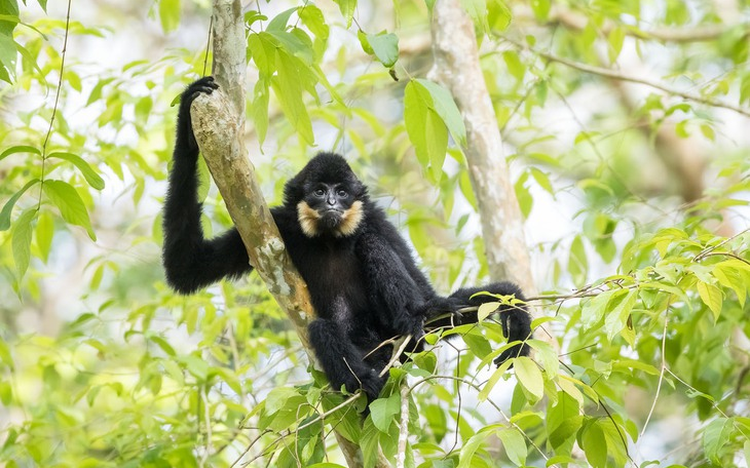
A golden-cheeked gibbon is captured in a picture by Israeli wildlife photographer Erez Marom.
From the golden-cheeked gibbon in Khau Ca and the Cat Ba langur in the north to the red-shanked douc on Son Tra Peninsula in the central region, Marom's lens has captured both their majesty and their fragility.
His goal is not only to showcase their beauty but also to raise awareness of their desperate fight for survival.
"The moment I saw these animals I was both joyful and fearful," Marom said.
"Because it might be the last time humans could see them in the wild."
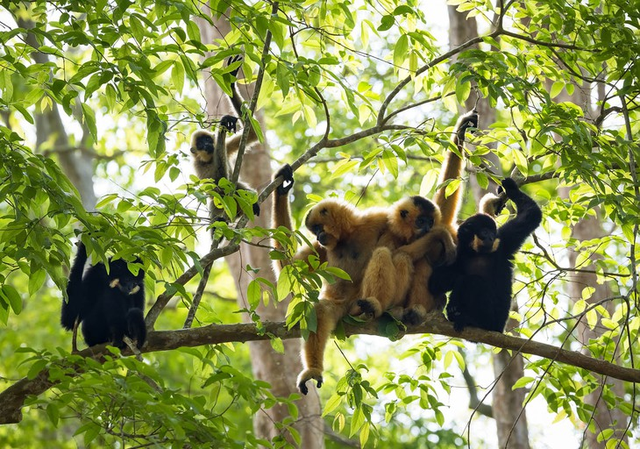
The number of rare animals is dwindling, prompting conservationists to refer to them as 'the ghosts of Vietnam’s forests.' Photo: Erez Marom
Over the past decade, Marom has returned to Vietnam repeatedly, from Cat Ba Island and Son Tra Peninsula to the limestone mountains of Van Long and the forests of Khau Ca, solely to photograph the primates most at risk of extinction.
He called them 'the ghosts of the forest,' at once majestic, delicate, and vanishing.
Vietnam is one of Southeast Asia's most biodiverse countries, yet more than half of its 24 primate species are now endangered or critically endangered due to habitat loss, poaching, and the illegal wildlife trade.
"Vietnam's forests are still there, but quieter than ever," Marom wrote in his travel notes.
"Many are breathtakingly beautiful, but the creatures that inhabit them now survive in only a few scattered groups."
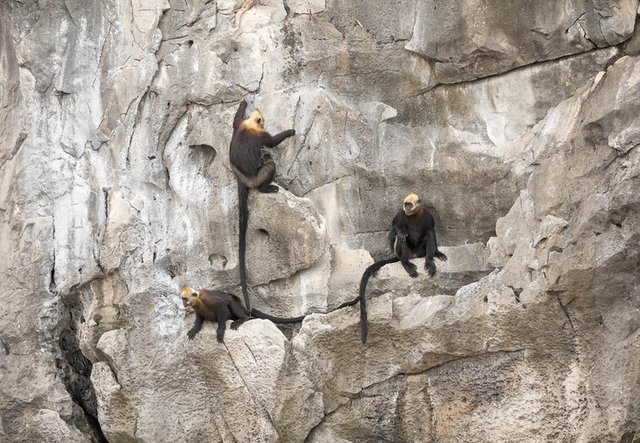
Like all langur species, the Cat Ba langur is highly social. They embrace when they meet and live in tightly bonded family groups. Photo: Erez Marom
During his journeys, Marom photographed species once feared extinct such as the Cat Ba langur, the red-shanked douc, the white-cheeked crested gibbon, the golden-cheeked gibbon, and the Tonkin snub-nosed monkey. Each encounter told a story of loss and resilience.
On the limestone cliffs of Lan Ha Bay, he watched a family of Cat Ba langurs leaping between rocks in the morning sun.
Once believed to number fewer than 50 in 2000, their population has risen to about 90 today thanks to conservation programs.
"They move like dancers," Marom said.
"Graceful, yet cautious, as if knowing one misstep could mean the end of their lineage."
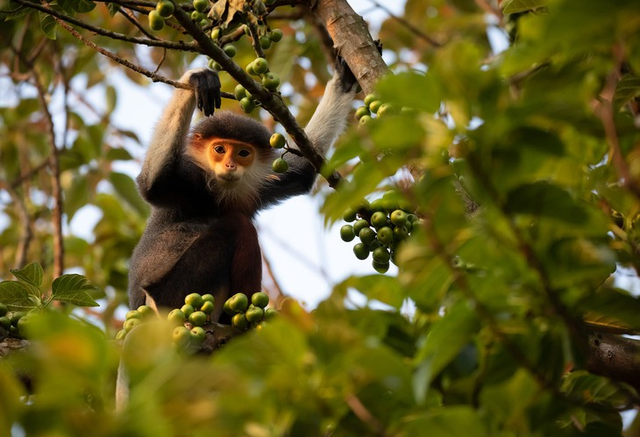
The red-shanked douc — the 'dancing treasure' of Son Tra in central Vietnam. These monkeys often gather near their favorite food sources, such as fig trees. Photo: Erez Marom
Leaving Cat Ba, he traveled to Son Tra Peninsula in central Vietnam to meet the 'jewels of the jungle,' the red-shanked douc, often called the world's most beautiful primate.
With their seven colored coats and gentle, smiling faces, they seem almost mythical.
Marom captured them perched among fruit-laden branches, sometimes playful, sometimes still.
"I always try to photograph them in their habitat," he said,"because that is where they belong, and that is what is disappearing."
Son Tra is now home to more than a thousand red-shanked doucs, Vietnam's largest population, yet urban development and tourism continue to threaten their survival.
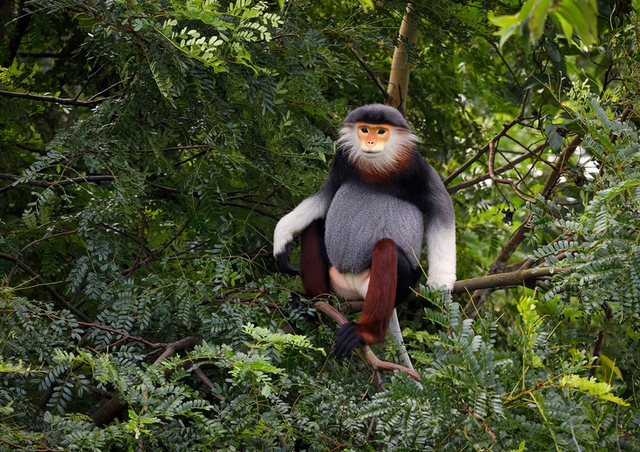
The brown-legged gibbon has a stunningly beautiful coat. Photo: Erez Marom
In Van Long Nature Reserve in Ninh Binh Province, northern Vietnam, Marom spent days hidden among karst cliffs, waiting to see the elusive Delacour's langur.
With only a few hundred left in the world, all in Vietnam, the species is one of the planet's rarest.
"They are as fast as the wind, gone in seconds," he recalled.
"But when I saw them huddling in the sunset, I understood why the Vietnamese call them the souls of the limestone mountains."
His photographs from Van Long later gained international acclaim for both their artistry and their power to highlight Vietnam's conservation achievements.
The final and most demanding leg of Marom's journey took him to Khau Ca, home to the Tonkin snub-nosed monkey, one of the world's rarest primates.
The expedition lasted over a week, involving steep climbs, sleepless nights, and simple meals of cold rice.
"Every step on the razor sharp ridges was a challenge," he said.
"But when I saw a group with infants, every exhaustion vanished."
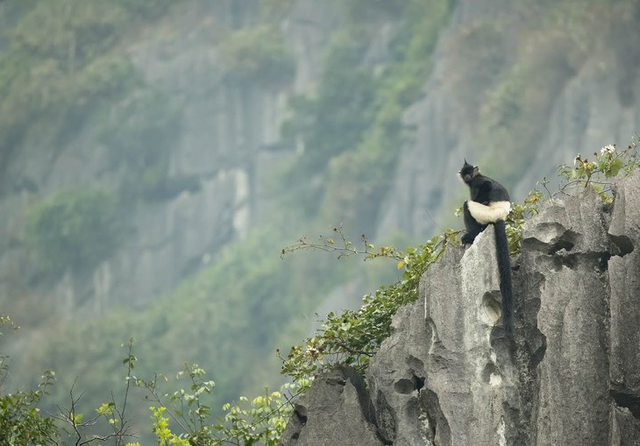
The Delacour’s langur: the 'limestone ghost' of Van Long in northern Vietnam. Photo: Erez Marom
Remarkably, his guides in this remote terrain were former hunters of the same species, now turned rangers and conservationists.
"They know the forest better than anyone, and now they protect it," Marom said.
Marom's photo series, Ghosts of the Jungle, has since been exhibited internationally, drawing attention to Vietnam's natural beauty and its fragile biodiversity.
"The most beautiful photographs aren't those perfect in light or composition," he reflected, "but those that make people want to protect what they see."
Across Vietnam, local communities and conservation groups are working to restore forests and protect rare primates, yet development pressures remain immense.
Every act of restraint, from refusing wildlife products to supporting sustainable tourism, becomes an act of hope.
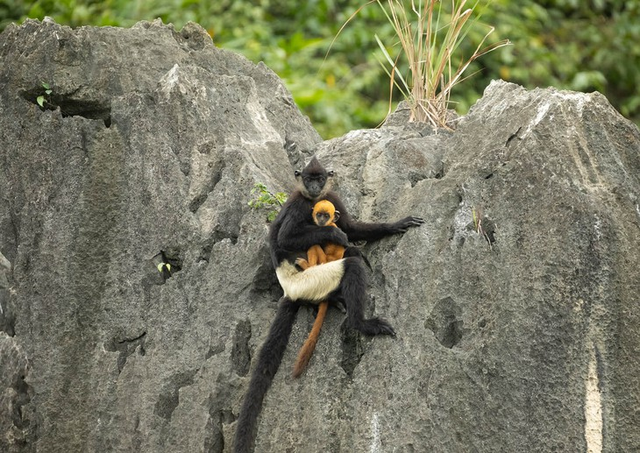
Delacour’s langurs have a striking orange color. As they mature, they gradually lose this hue, giving way to the vivid, monochromatic coat of adult langurs. Photo: Erez Marom
As he prepared to leave Vietnam once more, Marom vowed to return, not just to take photographs but to see whether those creatures still exist.
"Vietnam's forest still breathes, though its breath is fragile," he wrote.
"And if one day the call of the gibbon no longer echoes in the misty dawn, it will be a loss not only for Vietnam, but for all humanity."
Marom's work stands as a quiet reminder to protect the forest now, before all that remain are the ghosts seen only through a lens.
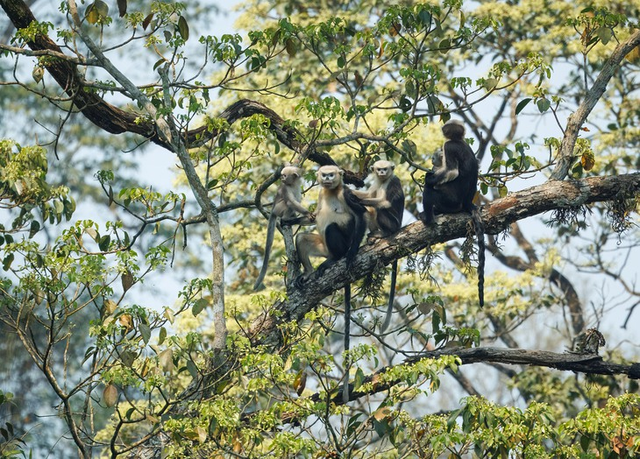
The last Tonkin snub-nosed monkeys of Khau Ca in northern Vietnam. These images serve as a message that forests are not just something to admire. Photo: Erez Marom

“The best photographs are not the ones perfect in light or composition, but the ones that make people want to protect what they see.” Photo: Erez Marom


Max: 1500 characters
There are no comments yet. Be the first to comment.